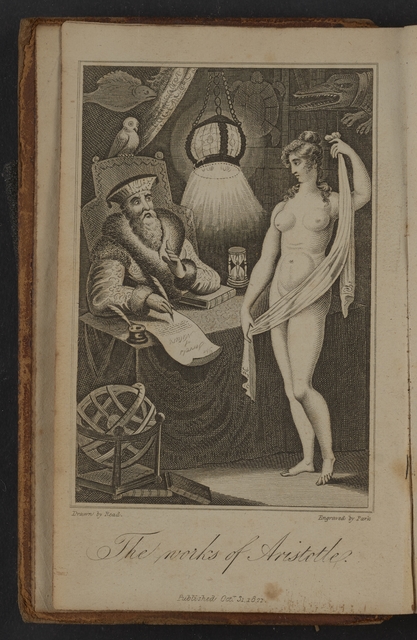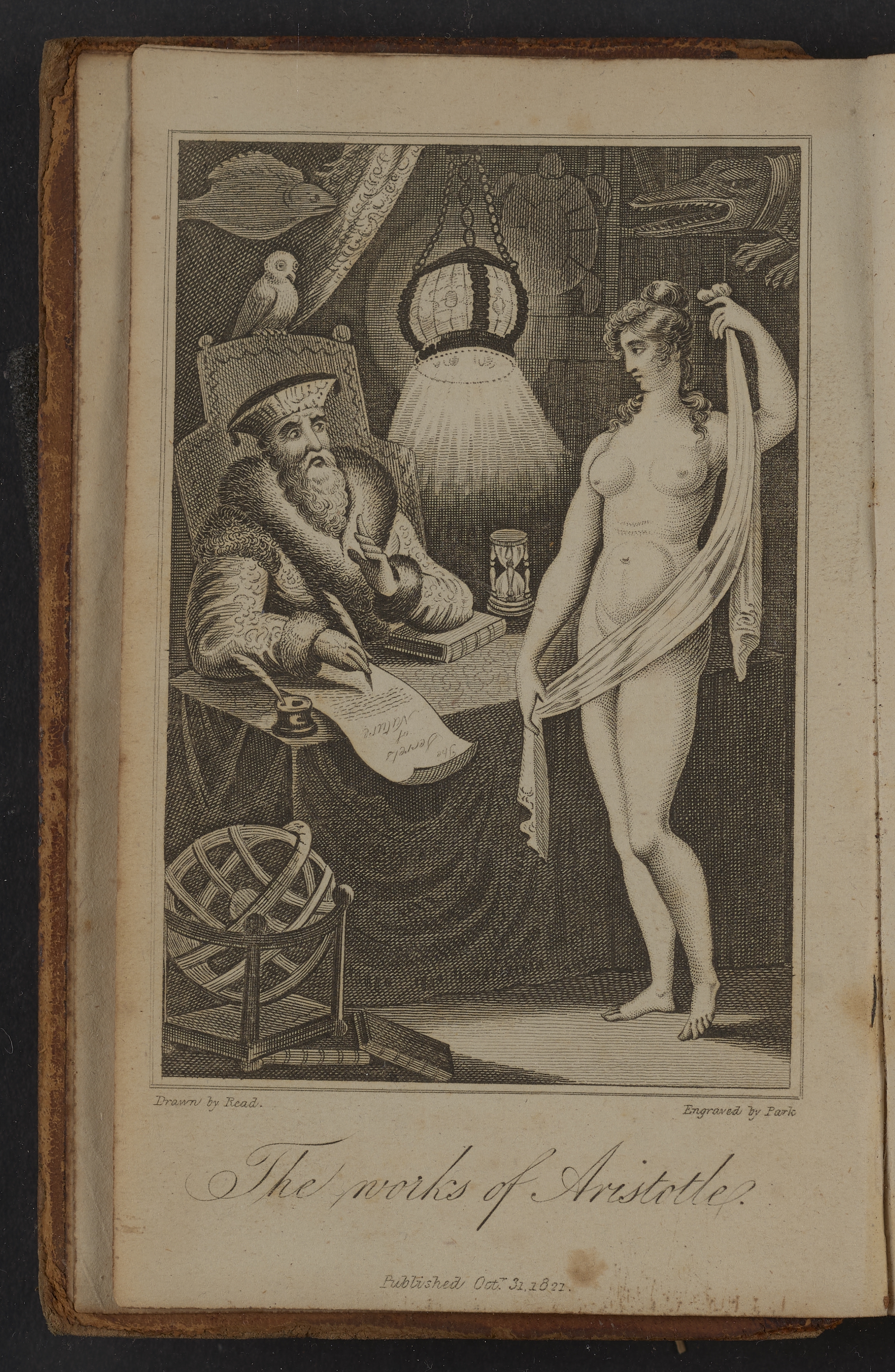XO33 The Works of Aristotle, the Famous Philosopher, in Four Parts.

Full description
The Works of Aristotle, the Famous Philosopher, in Four Parts (London: Miller, Law, and Carter, [1822?])
Penn Libraries, Kislak Center for Special Collections, Rare Books and Manuscripts, Temp. Control EAH0036
This is another edition of the so-called Aristotle's Masterpiece, a work dealing with popular medicine, especially women's health and sexual issues. The text, which first appeared in seventeenth-century England, was attached to the name of the Greek Philosopher, both because of Aristotle’s prestige as a natural philosopher and because he was also associated with another apocryphal work, the Problems, which cover similar topics. This edition was printed in London, probably around 1822, as suggested by the date below the image. The image in the flyleaf shows a respectably dressed old man - Aristotle - seated at a desk in a sort of Wunderkammer populated by animals, including an owl (symbol of wisdom) above him, and others dead on a wall or hanging from the ceiling: a fish, a turtle, and a crocodile. These animals reference Aristotle's knowledge of the natural world, just like the sphere in the lower left, in front of the desk, alludes to Aristotle's On the Heavens. In this nightly scene, Aristotle reacts in surprise to the sudden vision of a young naked woman, Nature, revealing to him her secrets. Aristotle is indeed pictured while writing a text entitled The Secrets of Nature, which is the title of the final treatise among the four that compose the text. In this sense, the image works as a variation on the topic of Aristotle as the secretary of nature. The naked lady could also be a reference to the contents of the text, which devotes large sections to women's bodies.
Marcus Papandrea
Comments
to view and add comments.
Annotations
No one has annotated a text with this resource yet.
- typeImage
- created on
- file formatjpg
- file size7 MB


